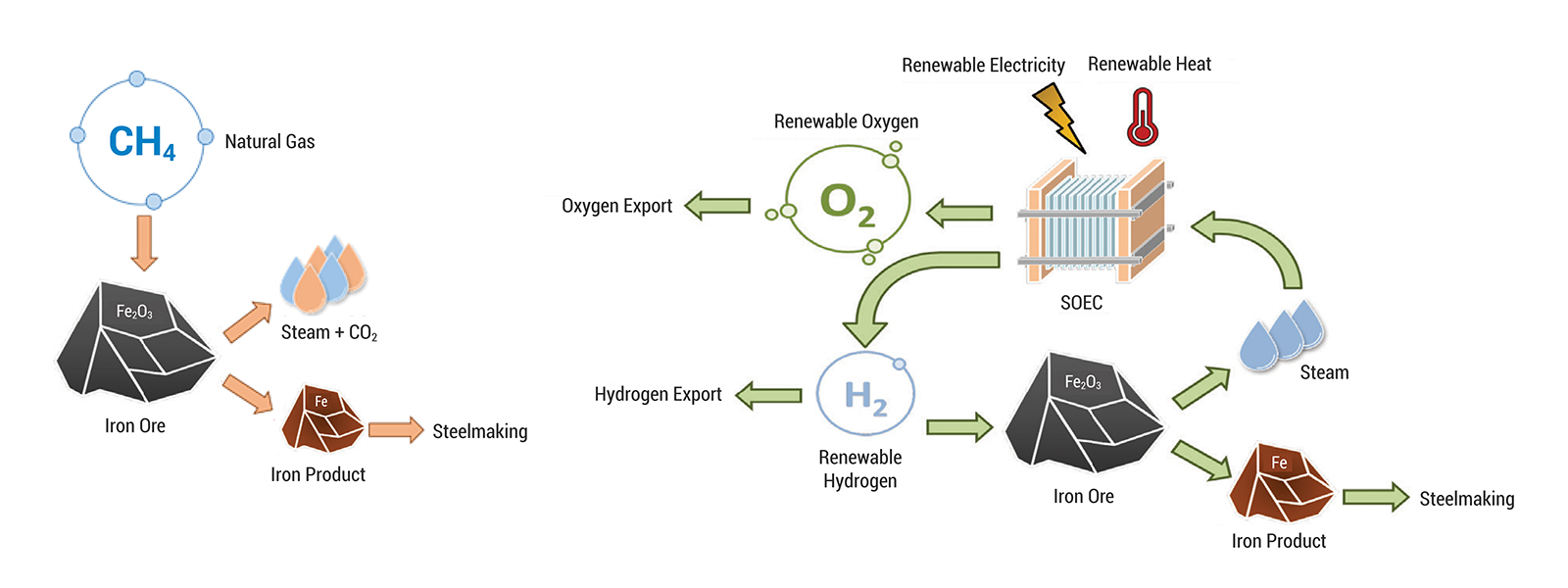This HySteel project seeks demonstrating the conversion from state-of-the-art fossil fuel-based direct reduced iron (DRI) technology to an electrified ironmaking process using renewable electricity and heat to produce hydrogen, which acts as the main reducing gas for iron ore. Hydrogen is produced via an electrochemical process in a Solid Oxide Electrolysis Cell (SOEC), which is thermally and chemically integrated into a Hydrogen Direct Reduction (HDR) plant. The only products of the iron ore reduction step are steam and renewable metal iron. Steam can be fully recycled and utilized to produce more renewable hydrogen and oxygen.

The project is a three-year effort that relies on modelling and demonstration of the integrated SOEC and DRI process to achieve a substantial improvement of primary energy saving and CO2 emissions reduction. It will also explore the synergistic integration between the SOEC-DRI system with other industrial activities that could be partly decarbonized by using the renewable hydrogen and oxygen produced by the SOEC plant.
Electrification of the steel industry and use of pure H2 for iron reduction is considered essential by the International Energy Agency (IEA) to reach the targets for decarbonization in the steel sector. The use of hydrogen in steel production would eliminate both greenhouse gas and pollutant emissions, whilst ensuring the continuous and reliable production process. The synergistic integration of high temperature electrolysis (SOEC) for hydrogen and oxygen generation reduces the overall primary energy consumption compared to the state-of-the-art, due to higher electrochemical conversion efficiency (compared to alternative electrolysis technologies) and to the integration with and use of heat from the steel production process.
Our models show that the proposed HDR concept has the potential of reducing the specific energy consumption by up to 35% compared to conventional DRI and ensuring the product specifications of a state-of-the-art DRI plant (metallization of 96%). The main goal of the project is to show the technical and — at scale v the economic feasibility of the thermal and process integration between an SOEC module and a DRI furnace. The demonstration will occur at the equivalent size of 1 ton/week of DRI product. Subsequently, the best performing configuration will be scaled-up in a design process to reach a production capacity of at least 2 Mton/year of DRI.
